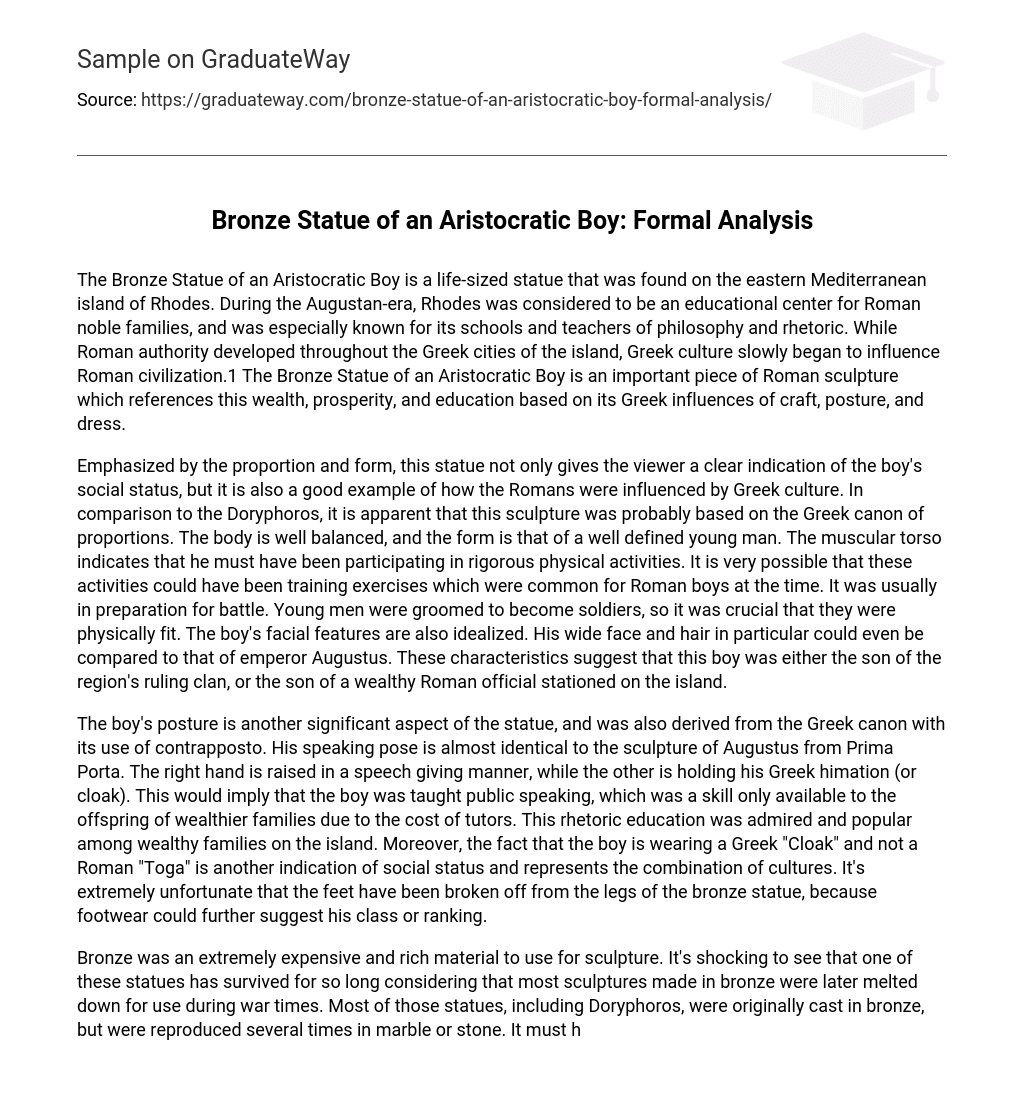The Bronze Statue of an Aristocratic Boy is a life-sized statue that was found on the eastern Mediterranean island of Rhodes. During the Augustan-era, Rhodes was considered to be an educational center for Roman noble families, and was especially known for its schools and teachers of philosophy and rhetoric. While Roman authority developed throughout the Greek cities of the island, Greek culture slowly began to influence Roman civilization.1 The Bronze Statue of an Aristocratic Boy is an important piece of Roman sculpture which references this wealth, prosperity, and education based on its Greek influences of craft, posture, and dress.
Emphasized by the proportion and form, this statue not only gives the viewer a clear indication of the boy’s social status, but it is also a good example of how the Romans were influenced by Greek culture. In comparison to the Doryphoros, it is apparent that this sculpture was probably based on the Greek canon of proportions. The body is well balanced, and the form is that of a well defined young man. The muscular torso indicates that he must have been participating in rigorous physical activities. It is very possible that these activities could have been training exercises which were common for Roman boys at the time. It was usually in preparation for battle. Young men were groomed to become soldiers, so it was crucial that they were physically fit. The boy’s facial features are also idealized. His wide face and hair in particular could even be compared to that of emperor Augustus. These characteristics suggest that this boy was either the son of the region’s ruling clan, or the son of a wealthy Roman official stationed on the island.
The boy’s posture is another significant aspect of the statue, and was also derived from the Greek canon with its use of contrapposto. His speaking pose is almost identical to the sculpture of Augustus from Prima Porta. The right hand is raised in a speech giving manner, while the other is holding his Greek himation (or cloak). This would imply that the boy was taught public speaking, which was a skill only available to the offspring of wealthier families due to the cost of tutors. This rhetoric education was admired and popular among wealthy families on the island. Moreover, the fact that the boy is wearing a Greek “Cloak” and not a Roman “Toga” is another indication of social status and represents the combination of cultures. It’s extremely unfortunate that the feet have been broken off from the legs of the bronze statue, because footwear could further suggest his class or ranking.
Bronze was an extremely expensive and rich material to use for sculpture. It’s shocking to see that one of these statues has survived for so long considering that most sculptures made in bronze were later melted down for use during war times. Most of those statues, including Doryphoros, were originally cast in bronze, but were reproduced several times in marble or stone. It must have been very well preserved and was probably intended as a tribute to the family.
The use of features such as form, posture, material, and dress all help the viewer understand the references made by the artist regarding the time period and traditions of the location in which the statue was created. Romans greatly admired Greek culture. This Augustan-era Bronze Statue of an Aristocratic Boy is truly successful in embodying the influences and ideals of both.





